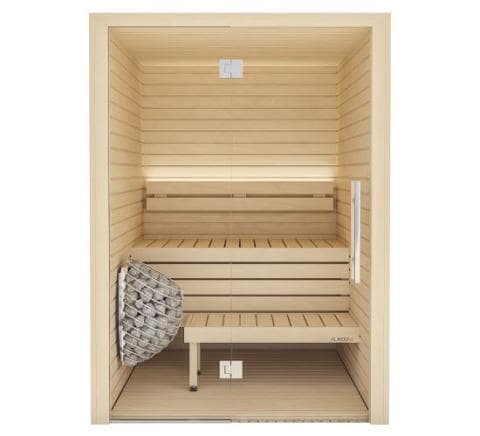All About Traditional Sauna
Things about Traditional Sauna
Table of ContentsAn Unbiased View of Traditional SaunaNot known Facts About Traditional SaunaTraditional Sauna Can Be Fun For EveryoneThe Definitive Guide for Traditional Sauna
The majority of the weight lost in a sauna is water loss and is re-gained upon rehydrating. Nevertheless, undoubtedly sauna can be a vital part of a healthy and balanced fat burning program. To look at the differences in between conventional and IR saunas, I will divide these into proven, theoretical, and made distinctions.Therefore, the most popular point in the saunawhich is at the ceiling directly above the sauna heateris generally between 185 and 190 F. Traditional Sauna. Claims that a conventional sauna goes beyond 200 F is simply not true and not applicable for electric saunas sold in the United States. The temperature level for a far-infrared sauna is generally set in between 120 and 140 F; however, unlike the typical sauna, the objective in and IR room is not to achieve a heat
As a result of this, the temperature difference is nearly pointless, given that extreme sweating causes both sauna types, yet the method of heating up the body is different. In an IR sauna the bather will really feel hot and will certainly sweat profusely, yet at a lot lower temperature levels. Hence, if the goal is to invest longer periods of time in the sauna, the IR sauna is an excellent choice.

Traditional Sauna - Truths
When the high temperature is achieved, the components cycle on and off to maintain the high temperature. The majority of traditional sauna customers take pleasure in putting water over the rocks to create heavy steam to increase sauna moisture degrees. The advantages of pouring water over the rocks include: making the space much more comfy, dampening the nasal flows, and permitting the use of aromatherapy by blending essential oils with the water.
In a far-infrared sauna, the warm front pass through the body to efficiently warm the body and elevate the body core temperature. To achieve this raised temperature, Far-infrared emitters create infrared energy which is close to the same wavelength as that which the body naturally emitsoften referred to as the "Crucial Array" of 7 to 14 microns), so the energy is well received by the body.
When the power gets in the body, it causes the body temperature to increase and eventually leads to sweat. In an infrared sauna it is very important for the emitters/heaters to stay on practically constantly. Considering that there is no mass of rocks to retain warmth, the sauna will cool down if learn the facts here now the emitters turned off.
As mentioned over, the sauna bather in an infrared room intends to place himself in front of running emitters to get optimal take advantage of the warm. The heating time for both spaces can be really various, depending upon just how the rooms are made use of. For a traditional sauna, a bather must enable 30-40 minutes for the area to accomplish a desired temperature level and to appropriately pre-heat the rocks.
The Facts About Traditional Sauna Uncovered
A well constructed sauna will normally accomplish a temperature of 150-160 F in about 30-40 minutes (Traditional Sauna). For hotter temperatures, the room might need to warmth for a longer period. Once the space achieves established temperature, the heating system will certainly cycle on and off, usually operating regarding 50% of the moment. The shielded wall surfaces and the heated rocks will certainly maintain the space hot and at secure temperature levels.
To some, 15 mins was "wasted" while the infrared energy heated up the timber panels instead of warming a body, while others locate a pre-heated room to be a lot more comfy and think an elevated beginning temperature is necessary to start perspiring. The length of recommended use for every room is about the very same (10-15 mins per session); however, due to the lower air temperature levels and the ability to really feel the impacts of infrared warm faster than a typical sauna, it is not unusual for a person to invest a total of 20-30 mins in an infrared sauna.
Conventional saunas often tend to be larger (therefore utilize even more electricity) than infrared saunas, although traditional saunas are certainly readily available in one and two person dimensions. For a two-person typical sauna, 5x6 or 5x7 dimension is most prominent. The top bench can pleasantly seat 2 or 3 people and is also long sufficient to relax during the sauna session.


The ordinary cost per kWH of power in the united state is about $0.11, so a 4.5 kW heating unit will certainly cost roughly $.50 to compete one hour, if the heating system runs continually for one hour. Generally a sauna heating system will certainly compete this post 75% of the initial hour and 50% of succeeding hours on given that the aspects cycle once the established temperature is attained.
The 8-Second Trick For Traditional Sauna
A 2 person far-infrared space is normally literally smaller sized than a traditional sauna, often regarding 4' x 4' or smaller. The IR heater is typically 1.5-1.7 kW utilizing a 120 volt 15 amp plug-in service. Considering that the room can be used sooner than a sauna space, we will certainly assume the area is used for to of an hour consisting of warmth up time.
There is a hardly ever gone over distinction in the social experience between the 2 areas. my sources While our culture has lost some of the social benefit of the traditional sauna experience, it can be extremely socially fulfilling. From family time in the sauna, to heart-felt conversations with better halves, to sauna partiesthe traditional sauna experience can bring about intimate socializing.
Most higher end infrared spaces consist of colored light treatment, audio systems and full-glass fronts.